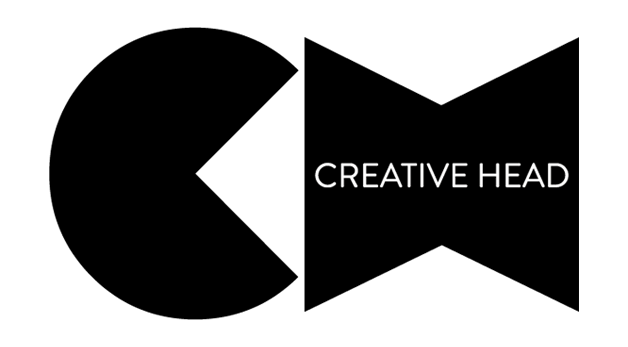
London Fashion Week SS26

Photography: Mattero Valle
Dreaming Eli
Danilo Giangreco for Revlon Professional
Titled “My Name is Amore”, the show was a love letter to women everywhere, set against the dramatic backdrop of the Gothic-style St. Cyprian’s Church in Marylebone. Hair was styled to echo the theme of romance; ethereal, soft, and polished yet with an undone edge. Danilo created the ‘love-me-knot’, a look that suggested the intimacy of love itself, intentional, passionate, and touched with the tenderness of the morning after. Hair was knotted and braided into a halo-like shape, then twisted into a delicate bun with loose pieces left to fall, evoking both softness and sensuality. A perfect match for a show bursting with feminine softness and strength all rolled into one!

Photography: Thomas Morgan for Authentic Beauty Concept
Erdem
Anna Cofone for Authentic Beauty Concept
It was back to British Museum for Erdem – it’s become his unofficial #LFW home – as names such as Beth Ditto and Ambika Mod gathered to enjoy the breathtakingly romantic pieces, inspired by the 19th Century Swiss medium Hélène Smith. Her trances “carried her across centuries, continents and planets”, and she believed herself to have lived other lives – within the French court, as an Indian princess and as a traveller in the Martian skies. Plenty for Anna to get her teeth into when it came to stories for the hair. She referenced the classic ‘70s mystery ‘Picnic at Hanging Rock’, alluding to the girls’ mussed-up, partied-out, next day hair. The hair looks embodied girls caught in fleeting moments – hair tousled and lived-in, with abstract waves and kinks.

Emilia Wickstead
Soichi Inagaki for Bumble and bumble
This collection drew on the radical sensuality and striking contrasts of photographer Robert Mapplethorpe – beauty and brutality, softness and severity, art and desire.
To mirror Wickstead’s meditation on contrast and quiet sensuality, lead hairstylist Soichi Inagaki using Bumble and bumble created hair that felt refined yet effortless, with soft movement as each model’s natural texture was accentuated. The result channelled the collection’s themes of duality, with hair that felt lived-in and intimate, yet carried the sculptural elegance and quiet power of a Mapplethorpe portrait.

Photography: Joss Wild for Authentic Beauty Concept
Susan Fang
Anna Cofone for Authentic Beauty Concept
The hair direction was inspired by the symbiotic relationship between nature and human design. Models wore a blend of natural, lived-in textures contrasted with sculptural, almost futuristic shapes; a vision of beauty set thousands of years ahead. Floating loops, sweeping side partings and weightless textures captured Susan Fang’s creative theme perfectly. Overall, an effortless, lived-in feel with a touch of the poetic.

Vin + Omi
Karoliina Saunders for R+Co
Dishevelled, worn, messy beehives and explosive hair that looked shattered reflected the show’s concept of dysphoria, with tools to hand from Cloud Nine. Both styles were crafted using donated synthetic wigs, underscoring the show’s powerful message of sustainability. Backcombing magic starts with R+Co Sky Line Dry Shampoo; its powdered texture delivers that perfect, runway-ready volume. She kept the product line up minimal, using R+Co Vicious for hold and Rockaway Sea Salt Spray on the ends to achieve a worn-in finish, enhanced with razoring for those edgy, shattered details. She also razored the ends to achieve the same effect.

AKOK
Richard Phillipart for Authentic Beauty Concept
On the top floor of Hamleys, tucked between plushie Pokémons and toy planes, designer Anamika Khanna unveiled her debut LFW collection for AKOK. Reinventing traditional Indian garments with a contemporary edge, the show was complemented by hair direction from Richard Phillipart, tailoring looks to each model’s individuality. Some styles carried a smoother, more refined texture, while others embraced a grungier, undone finish. Across the board, there was a carefree essence running through, enhanced by subtle braids threaded beneath the hair.

Karina Bond
Efi Davies for TONI&GUY
Efi led the TONI&GUY Session Team in crafting a 3D silhouette within the hair, extending the back of the head shape to create a squared, top-heavy effect. Elements of Karina’s 3D printing technique were seen using studs in the hair, adding a futuristic edge. With ‘The Midnight Sun’, the label presented a contrast to the rise of illusory AI fashion, with pioneering innovation and craftsmanship that feel otherworldly yet exist in the physical realm.

Richard Quinn
Sam McKnight for Hair by Sam McKnight
An haute couture updo, the look was an ode to glamour and elegance, with a sleek French twist and volume. With Naomi Campbell opening the show, what followed was a showcase of silhouettes, from caped column gowns to ‘50s tulle skirts.

Edeline Lee
Philipp Haug for Schwarzkopf Professional
SS26 The theatrical elements of the clothes were contrasted with modern, sleek hair with strong partings in a ponytail or neatly tucked into the statement collars. A clean approach was taken to keep the focus on the clothes, styling hair away from the face and incorporating different hair length models. Minimalist ponytails and high-collar clothing were paired with strong side partings to evoke a sense of strength.

Roksanda
Anna Cofone for Authentic Beauty Concept
A fantastic show blending sculptural beauty and high-gloss style to honour Roksanda’s 20 years of visionary design. Backstage, Anna shaped hair like modern art to carve fluid, high-shine shapes. With wide-tooth combs, sculptural lines and curves were etched into both short and long styles with sides kept sleek and square, crowns pushed back into graphic forms. Diffused drying sealed the structure, creating looks that were fluid yet bold, mirroring Roksanda’s dynamic silhouettes.

Rory Docherty
Richard Phillipart for Authentic Beauty Concept
A lived-in, summer-fresh look by Richard and his team, inspired by the prints and designs on the clothes, hand drawn by Rory and featuring sea anemones, pebbles, stones and the movement of water. They wanted to evoke that same fresh crisp summer feeling in the hair. Starting with Authentic Beauty Concept Glow Spray Serum, he layered on Nymph Salt Spray for that effortless, air-dried texture. Solid Pomade up front and the Strong hold spray kept every raked strand perfectly in place

Cos Sakkas for TONI&GUY
Cos led the TONI&GUY Session Team in capturing the allure of movie icon Sharon Tate, evoking the spirit of late ’60s California glamour. The look features a voluminous beehive silhouette paired with soft, face-framing strands, a modern interpretation that pays homage to her signature elegance and the bouffant styles of 1967. Retro yet contemporary, the hair complemented Paul Costelloe’s Boulevard of Dreams collection, a vibrant ode to femininity, freedom and effortless glamour.

Harri
Danilo Giangreco for Revlon Professional and American Crew
Danilo worked with American Crew and Revlon Professional to embrace the models’ own style, making them feel like their true selves on the runway, celebrating natural curls, all textures, mullets and extra-long hair, embracing individuality and what made each of the models unique. The concept for the show was creatives walking to work and the line-up featured a mix of models and working people. The hair looks played into the ongoing, genderless hair trend of balancing softness with edge working across masculine and feminine aesthetics. For men’s hair, full fringes and curtain bangs remain a strong hair trend in 2026 adding character and personal expression to layered cuts.

Oscar Ouyang with NEWGEN
Kim Rance
The NEWGEN space was buzzing, and backstage carried the same energy; lively yet calm, organised chaos with a playful edge, and yes… feathers everywhere! These feathers, sourced as by-products from chickens and turkeys, were woven into both the outfits and the hair, giving the show a slightly feral, eccentric “public school boy” vibe. Former It List winner, Kim Rance, was on hand, curling, brushing and artfully tucking in feathers to create the look of a mischievous pillow fight aftermath.

Left: Patrick Wilson (photography by Matteo Valle) Right: Issac Poleon (photography by Alexis White)
SPOTTED!
Hairstylists hit the runway at Harri, with session stylists Patrick Wilson and Issac Poleon walking rather than doing hair (Danilo Giangreco for Revlon Professional had that job!)







































